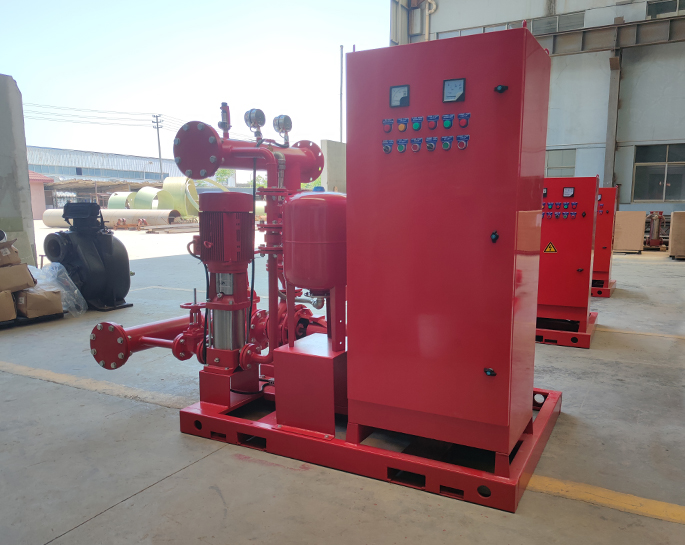Common problems and solutions for fire pump systems
Fire pump systems are critical components of fire protection and safety measures, and their reliability is essential to ensure the efficient functioning of fire suppression equipment. However, like any mechanical system, fire pump systems can encounter problems. Here are some common problems and their solutions for fire pump systems:
-
Lack of Water Supply:
- Problem: Inadequate or interrupted water supply to the fire pump.
- Solution: Ensure that the water source (e.g., water tank, reservoir, or municipal supply) is properly maintained, regularly inspected, and free from contamination. Install backup water sources or additional pumps for reliability.
-
Cavitation:
- Problem: Cavitation occurs when the fire pump's suction pressure drops too low, causing air bubbles to form in the water. This can damage the pump over time.
- Solution: Adjust the suction pipe size, install a larger water supply, or use a low-suction alarm to prevent this condition. Properly size the pump to match the system requirements.
-
Overheating:
- Problem: Fire pump overheating can lead to mechanical failures and system downtime.
- Solution: Regularly inspect and maintain the pump's cooling system. Ensure proper ventilation and cooling to prevent overheating. Consider installing temperature monitoring and automatic shutdown systems.
-
Vibration and Misalignment:
- Problem: Excessive vibration and misalignment can lead to damage and premature wear of pump components.
- Solution: Regularly check and align the pump and motor. Replace worn or damaged bearings and other components as needed. Balancing impellers and rotors can reduce vibration.
-
Electrical Issues:
- Problem: Electrical faults or failures in the motor or power supply can disrupt the pump's operation.
- Solution: Regularly inspect and maintain electrical components. Install surge protectors and electrical monitoring systems to prevent damage from power surges or outages.
-
Corrosion and Rust:
- Problem: Corrosion and rust can affect the pump's components and reduce its efficiency.
- Solution: Implement proper corrosion prevention measures, including the use of corrosion-resistant materials, protective coatings, and routine inspections to detect and address corrosion early.
-
Improper Lubrication:
- Problem: Inadequate lubrication can lead to increased friction, wear, and damage to pump bearings and moving parts.
- Solution: Follow the manufacturer's recommendations for lubrication schedules and types of lubricants. Regularly check and maintain lubrication systems.
-
Blockages and Debris:
- Problem: Debris or foreign objects can block the intake or impeller, reducing pump efficiency.
- Solution: Install strainers or filters at the pump intake to prevent debris from entering the system. Regularly inspect and clean the strainers.
-
System Leaks:
- Problem: Leaks in the system can lead to water loss and reduced pump efficiency.
- Solution: Routinely inspect the entire system for leaks and promptly repair any identified issues. Regularly check gaskets and seals for wear and replace them as needed.
-
Failure to Start or Prime:
- Problem: Fire pump systems may fail to start or prime properly, rendering them ineffective in an emergency.
- Solution: Conduct regular system tests and inspections to ensure the pump starts and primes as expected. Address any issues with the starting mechanism and consider installing backup power sources or priming systems.
To maintain the reliability and effectiveness of fire pump systems, regular inspections, maintenance, and adherence to relevant standards and guidelines are essential. Proper training for personnel responsible for fire pump systems is also crucial to identify and address potential problems promptly.







